
If you haven’t seen Cardiff in a while, you’re in for a pleasant surprise
[caption id="TheNewCardiff_Feature" align="aligncenter" width="1024"]
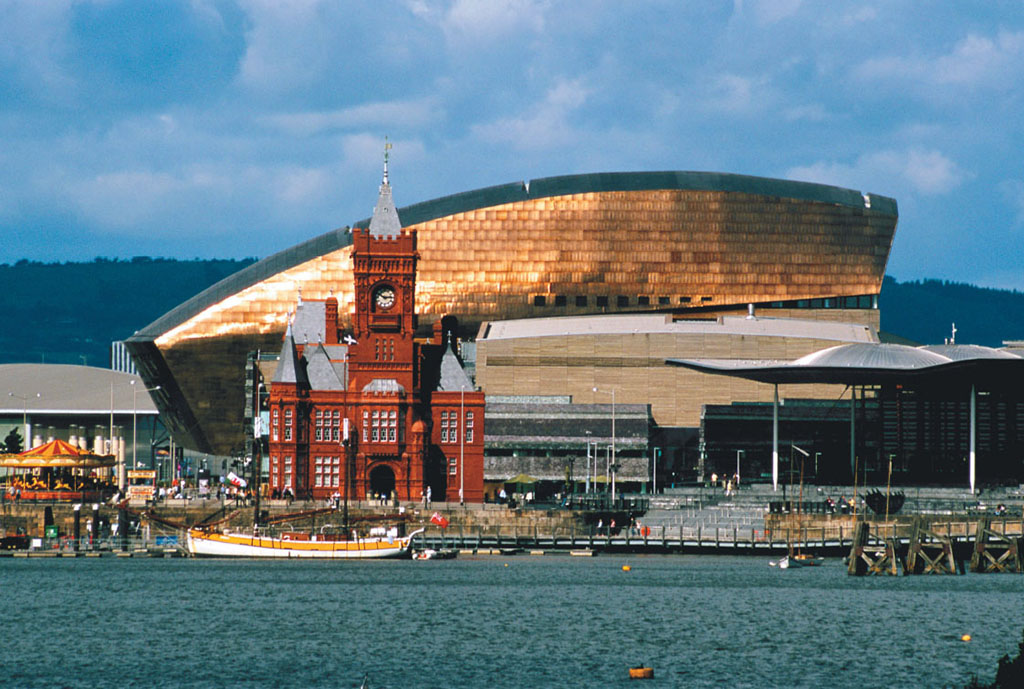
WWW.CARDIFFANDCO.COM
[caption id="TheNewCardiff_img1" align="aligncenter" width="273"]

123RF
[caption id="TheNewCardiff_img2" align="aligncenter" width="270"]
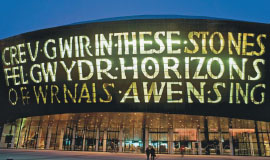
BRITAINONVIEW/DAVID ANGEL
The words emblazoned across the iconic Wales Millennium Centre in Cardiff Bay declare in Welsh, Creu gwir fel gwydr o ffwrnais awen (Creating truth like glass from inspiration’s furnace); and in English, “In these stones horizons sing.
Composed by Welsh poet Gwyneth Lewis, the lines swirl with energy and aspiration, romance and raw hard work: Like the building’s curved, textured stainless steel roof, they evoke the mythical cauldron of Ceridwen, source of inspiration to the medieval poet Taliesin, with maybe a pragmatic nod to the historic industrial foundries of south Wales. The roof signifies a ship coming into port, while the layered slate walls on either side whisk dreams off to distant horizons: lands to which Cardiff exported coal and from which people came to swell the city’s population.
Like many things in the “new”’ Cardiff (the Millennium Centre opened in 2004), the building is a conscious design mix of function and symbol. It’s a superb theater venue and “furnace of creativity” for resident organizations like Welsh National Opera. And it’s a statement of modern identity, idealism, vitality and pride: for Cardiff as a capital and for Wales as it seeks to carve out independent status. Time was, the Cardiff docklands were run-down and shunned. These days the regenerated bay area, with the Senedd (Welsh Assembly) and leisure facilities at its heart, is a top draw for the more than 11 million visitors who come to the city each year. If you haven’t dropped by for a while, you’ll be surprised at how Cardiff is measuring up as a showcase for Wales.
[caption id="TheNewCardiff_img3" align="aligncenter" width="422"]
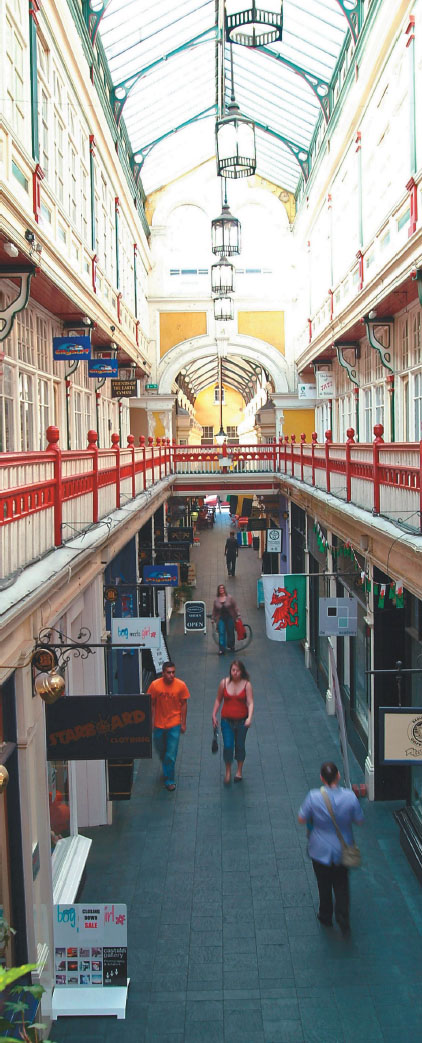
BRITAINONVIEW/GRANT PRITCHARD
[caption id="TheNewCardiff_img4" align="aligncenter" width="778"]

WWW.CARDIFFANDCO.COM
First, some back story: Romans arrived and built a fort on the site of present-day Cardiff Castle nearly 2,000 years ago, to guard the route between their gold mines in western Wales and their regional capital near Newport. Later the Normans raised a castle on the site of the Roman fort, and their settlement evolved into an essentially English town. Owain Glyndwr, speaking for the wider native population, burned much of it in 1404. After that, except for 17th-century Civil War ructions (Cardiff was captured by the Parliamentarians), life puttered along unremarkably.
That is, until the Industrial Revolution. Cardiff’s fortunes suddenly changed as the minerals of the nearby valleys were exploited: From the 1790s the Glamorganshire Canal forged a link with the major iron center of Merthyr Tydfil. And when the Black Gold of the south Wales coalfields also began pouring to the coast, the wealthy Bute family built the Victorian docks.
By 1913 Cardiff was the largest coal-exporting port in the world, and the trading floors of its Coal Exchange witnessed reputedly the first r£1 million business deal. The local population surged from some 20,000 in 1851 to more than 160,000 in 1901, while Victorian and Edwardian riches translated into the buildings and streets at the center of things today. In 1955 Cardiff was recognized as the capital of Wales.
Yet fortunes were already on the slide. The Glamorganshire Canal closed in 1951, and containerization and the decline of the coal trade would bring Cardiff’s days as a major port to an end. The last coal shipment left Bute East Dock in 1964. Except for producing international singing diva Shirley Bassey, born in 1937 in the old Tiger Bay area of docklands, the waterfront moldered.
Its imaginative revitalization in the last two decades has been little short of stunning. The neighboring bonded Port of Cardiff is also a growing commercial concern, handling over 3 million tons of cargo a year, from steel to dry bulk goods.
Visit Cardiff today and you’ll sense a “big village” atmosphere. The population is estimated at around 315,000, 10 percent of which are students at the well-regarded university. Within one square mile you’ll find the famous castle, National Museum Cardiff, the Civic Centre and impressive Millennium Stadium. It is 10 minutes by “bendy-bus” from the city center to Cardiff Bay, or a breeze on the waterbus that runs from the Millennium Stadium.
I did the center first, starting at Cardiff Castle on the bank of the River Taff. Climb the stone Norman keep, anchored on its motte, for great views across the top of the city. But the main attraction is a tour of the castle’s Victorian interiors, extravagantly refurbished in mock medieval style by the 3rd Marquess of Bute. He was just 18 when he met the maverick architect William Burges in 1865.
“Burges was a small, eccentric man who sometimes dressed in a medieval court jester’s costume, often with a parrot on his shoulder,” revealed our guide, Steve. In Burge, the shy, scholarly Lord Bute spotted just the fellow to share his love of the Middle Ages.
The results of their partnership over the next 16 years are dazzling: Room upon room saturated with murals, sculptures, paintings, ornate chimneys and intricate marquetry, from the Chaucer Room to the library. Friezes and carvings conjure history, myth, saints and fairytales with astounding craftsmanship. Make no mistake: The 3rd Marquess was one of the richest men in the world.
Bute family money also transformed the city during the coal boom, and when the family finally relinquished the castle in 1947, they gave it to the people of Cardiff. It’s in good hands. Visitors quickly notice—both here and at other city attractions—how much enthusiasm guides put into their jobs. Maybe it’s part of that big village personal pride. The castle boasts a new interpretation center with exhibition, audiovisual presentation and café; welcome facilities indeed. Here you can collect hand-held audio guides before setting off along the battlements.
Just around the corner from the castle is Cathays Park, one of the smartest, most pleasant civic centers in Britain. The Bute family agreed to sell the land for r£161,000 to Cardiff Corporation in 1898, with stipulations about retaining trees and green spaces. Coal money helped raise the noble Portland stone buildings: The baroque City Hall, the National Museum, Cardiff University and Law Courts. Wide avenues, lawns, fountains, plus Gorsedd, Friary and Alexandra Gardens have lost none of their elegant aspect.
I had a baguette lunch in the National Museum before taking the marble staircases to all manner of collections (admission is free). Highlights? “Origins: In search of early Wales,” a gallery of precious artifacts that dig into the roots of Cymry or “people of the same district.” The art galleries, too, are a must, and not just for the renowned Impressionist and Post-Impressionist paintings bequeathed by two extraordinary sisters from mid-Wales who had the foresight to buy “modern French art.” You can also get to grips with Welsh artists, like “father of landscape painting” Richard Wilson (1714-82) and Kyffin Williams (1918-2006).
Scarcely a kick of a ball away, the Millennium Stadium on Westgate Street is another temple of Welsh culture. Built on land the good old 3rd Marquess of Bute allowed to be used for sport—known as Cardiff Arms Park after a now-vanished coaching inn where players used to change—it opened in time to host the Rugby World Cup in 1999. Stadium guide Steve shows up to 12 parties of visitors around each day. Soccer’s FA Cup was held here while the new Wembley Stadium was being completed; cricket, speedway and pop concerts are staged here, and it’s a venue for football at the 2012 Olympics. But its fame is really as the crucible of Wales’ national rugby exploits.
In between visiting the big three attractions in this part of town, drop into the Tourist Information Centre on The Hayes. It’s full of good (free) information about walks, theaters, entertainments and eateries, of which there are plenty. Then wander the Victorian and Edwardian shopping arcades, the atmospheric galleried hall of Cardiff Market, Queen Street’s charming boutiques and historic gems like St. John’s Church, rebuilt in Perpendicular style in the 15th century.
There’s no doubt that some buildings on the main thoroughfare of St. Mary Street could do with a facelift, and if you’re not into clubbing you won’t necessarily hit the downtown for your night out. But big works at the adjacent r£675 million St. David’s development, due for completion in autumn 2009, could appeal—featuring hundreds of shops, a four-star Radisson SAS hotel, a r£12.75 million library plus restaurant and café areas. The existing St. David’s Shopping Centre is being modernized to ensure a seamless link.
Now to Cardiff Bay and Creu gwir fel gwydr o ffwrnais awen. Before immersing yourself in the slick new venues, visit Butetown History & Arts Centre on Bute Street, 10 minutes’ amble from the Wales Millennium Centre. It’s a low-key place, but you’ll get a genuine grassroots feel for what the old Butetown and docklands area was like when it drew seamen from around the world and was home to at least 50 different nationalities. Howard Spring’s famous evocation in Heaven Lies About Us (1939) speaks of the warren of seamen’s boarding houses, children of the strangest colors (the “fruit of frightful misalliances”) and shops run by all the clans and classes under the sun. “It was a dirty, rotten and romantic district,” Spring wrote, “an offence and an inspiration, and I loved it.”
Back waterside, Cardiff Bay Visitor Centre is packed with quality information and tells the story of the Bay’s transformation from a 1980s wasteland. Regeneration “to put Cardiff on the international map as a superlative maritime city” began in 1987 and r£2.4 billion of public-private investment has been pumped in. The new Wales Millennium Centre and the Senedd sit beside old buildings like the terracotta Victorian Pierhead Building and Norwegian Church (now an arts center). Mermaid Quay swanks along the waterside with its shops, cafés and restaurants. The top-flight St. David’s Hotel offers superb rooms with a view, offices and a penthouse that will cost you more than you can afford. Sculptures and innovative artworks are everywhere—modern civic pride finds more abstract expression than solid Victorian/Edwardian foursquare building.
Key to everything is the 3,609-foot Cardiff Bay Barrage, completed in 2001. Its construction and the impoundment of the waters of the Rivers Taff and Ely have created today’s 494-acre freshwater lake in place of tidal mud flats and salt marsh—the Bristol Channel has the second highest tidal range in the world. Five sluice gates regulate water levels while three locks and bascule bridges allow sailing vessels into and out of the bay, and a fish pass lets salmon and sea trout into the Taff and Ely to spawn. Wetlands created on the edge of the bay are a haven for wildlife.
Surrounded by computer screens at Barrage Control, Gareth Ballett explained how staff maintains round-the-clock operation of all the works. Water users now have 24-hour access to the Bristol Channel, doubling the resident moorings at local yacht clubs. “Sundays are busiest,” Ballett said. “We can get 370 boat movements in eight hours.”
[caption id="TheNewCardiff_img5" align="aligncenter" width="374"]
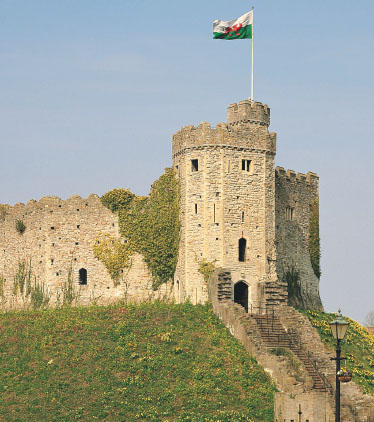
WWW.CARDIFFANDCO.COM
[caption id="TheNewCardiff_img6" align="aligncenter" width="319"]
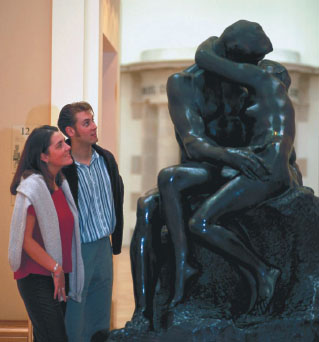
BRITAINONVIEW
[caption id="TheNewCardiff_img7" align="aligncenter" width="444"]
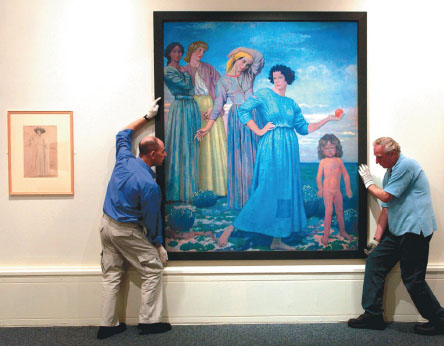
©JEFF MORGAN THE ARTS/ALAMY
Julie Thomas, senior marketing officer with Cardiff Harbour Authority that oversees the bay, reported a surge in water sports activity. A r£1.2 billion International Sports Village is being developed featuring, among other things, an Olympic standard white-water center. “We’ve already had Australia and China come to look at water training facilities prior to the 2012 Olympics,” she said. “Our Olympic-standard canoe slalom will be ready by 2010.” Many quietly hope more than Olympic football comes to the Welsh capital.
The Senedd is the political pulse helping drive Cardiff to new heights. In 1997 the people of Wales voted by a narrow margin for devolution and since then many Acts of Parliament have given more powers to Wales’ National Assembly. Book a tour around the Senedd and you’ll get chapter and verse—as my guide Richard Gwyn Jones said, “Devolution is a process, not an event.” Currently, “the newly emerging Welsh democracy” gets a block grant from the UK Treasury and decides how to spend it. “The Assembly has powers to develop and implement policy within a range of areas, including agriculture, health, education, tourism, housing and economic development. The likes of tax, foreign policy and defense issues remain British decisions.”
On a visit to Cardiff, stay at …
UPSCALE
- Barcelo Cardiff Angel Hotel, Castle Street. Tel: 029 2064 9200. Victorian hotel located between Cardiff Castle and the Millennium Stadium www.barcelo-hotels.co.uk
- Hilton Hotel, Kingsway, Greyfriars Road. Tel: 029 2064 6300. Stylish hotel with spa, overlooking Cardiff Castle and civic buildings www.hilton.co.uk/cardiff
- The St. David’s Hotel & Spa, Havannah Street, Cardiff Bay. Tel: 029 2045 4045, Luxury landmark waterside hotel www.thestdavidshotel.com
- Express By Holiday Inn–Cardiff Bay, Atlantic Wharf. Tel: 029 2044 9000. Modern hotel, easy walk to Mermaid Quay, 15 minutes’ walk to city center www.hiexpress.com
- Lincoln House Hotel, Cathedral Road. Tel: 029 2039 5558; Victorian house retaining original features, easy walking distance to city center www.lincolnhotel.co.uk
- The Town House, Cathedral Road. Tel: 029 2023 9399, Classic Victorian town house, 10 minutes from city center www.thetownhousecardiff.co.uk
MEDIUM PRICE HOTELS AND B&BS
Look for special deals like Cardiff Castle Breaks, Heritage Breaks and Seasonal Escapes.
Accommodation www.visitcardiff.com
Assembly deliberations are bilingual, with 40 percent of the 60 members speaking Welsh (Welsh speakers nationally average 20 percent). “The Senedd proactively promotes Welsh. Staff and members are provided with free lessons,” Gwyn Jones said. You can almost hear Glyndwr cheer, and there’s no little irony, since the distinctive English language identity of “Kairdiff” had prompted Victorian teachers to make children wear necklaces carrying the words “Welsh Not” in order to drive the Welsh tongue out of schools.
“We get around 3,000 children a month visiting to learn about the Senedd and we have a dedicated education team,” Gwynn Jones said.
The subject of devolution is a book in its own right. If you are Welsh and British and believe the UK as a whole is greater than its parts, it’s unsettling. But the Senedd building is quite magnificent, arrayed with features symbolizing Wales’ idealistic aspirations, strikingly designed in Welsh slate and glass to reflect the National Assembly’s core philosophy of openness and transparency. Simply wander in, watch members at work (log onto www.senedd.tv for a live Webcast) and enjoy lunch in the upstairs café overlooking the bay. It’s airy and pleasing, and built to admirably high standards of environmental performance.
Cardiff might be small and youthful for a capital, but it is welcoming in its big-village feel. The momentum to be a dynamic showcase for Wales’ ambitions as a nation is really rolling, and there’s a sense of purpose in what’s being crafted in the urban furnace of this historic melting pot.





Comments